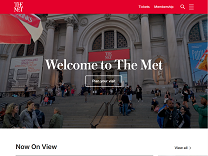This portrait dates to 1510 and depicts ten-year-old Federico II Gonzaga (1500–1540), future Duke of Mantua and son of the great Renaissance patron and collector Isabella d’Este (1474–1539). Isabella commissioned the painting as a memento of her son, who was soon to be sent from his home in Mantua to the papal court in Rome as part of a hostage exchange. Federico’s detainment would allow for the release of his father, Francesco II Gonzaga (1466–1519), who was in Venetian custody for his part in the War of the League of Cambrai. En route to surrender himself, the young Gonzaga stopped in Bologna where he met with his already liberated father, and sat for Francia, who made sketches of him for this portrait.[1]Working with notable speed, Francia completed this painting in just twelve days (between July 29–August 10, 1510) and promptly sent it to Isabella. Though pleased with Francia’s work, Isabella returned it so that the artist could darken Federico’s hair, which she determined looked too blonde.[2] On its way back to Francia’s studio, the painting briefly disappeared, having been intercepted by Zoanpietro da Cremona, Pope Julius II’s camerario, who brazenly took the work to Rome on the pope’s orders.[3] With Isabella’s anger mounting, and with Francia proclaiming that he would not repaint the picture „for all the gold in the world,“ the painting was soon relinquished and sent to Bologna. Francia corrected the coloring of the hair and had it safely back in the hands of Isabella in about nine days.[4] In the final portrait, the young Mantuan is stylishly attired in a black berretta, embroidered gown, and jeweled chain with a pearl. His costume is evidence of Isabella’s interest in fashion—her refined taste was well known and had become a point of pride for the family. As a further assertion of the status and power of his family, Federico holds a smallsword in his right hand, though his rosy cheeks and faraway gaze betray the purity and sweetness of his youth. Despite the highly personal nature of this portrait, it did not stay long in Isabella’s collection. She unexpectedly chose to send it as a gift to the poet and collector Giovan Francesco Zaninello, a relatively new acquaintance of hers to whom she had already gifted a portrait of herself, also by Francia, in March of 1512. The portrait of Federico II would soon follow, being sent to Zaninello in Ferrara between April and May of that same year. Though portraits were regularly given as gifts, Isabella’s decision to part with this painting is nonetheless surprising, even if it does seem to have been given as thanks for an impressive book of sonnets that Zaninello sent her. It has been posited that in committing to such a significant gift, Isabella was signaling her desire to establish a relationship with a fellow collector from whom she may have hoped to acquire something in the future.[5] From a letter dated May 24, 1512, we know that Isabella was already expressing a need to replace the portrait of her son. Though she commissioned Raphael (1483–1520) to paint this replacement, the portrait was ultimately left unfinished and wasn’t delivered to Federico until years later in 1521, following Raphael’s death. Raphael’s portrait remains untraced. It is possibly identified with a work mentioned in the 1626 inventory of the collection of Ferdinando VI Gonzaga (1587–1626): „Un quadro dipintovi l’aritrato del Duca Federico giovaneto armato.“[6] Federico would also have his portrait painted by Titian (ca. 1485/90? –1576) in about 1629 (Museo del Prado, Madrid).Like his parents before him, Federico would go on to become a great patron of the arts. Among his notable contributions was the commissioning of the Palazzo Te, designed and decorated by Giulio Romano (1499?–1546) with some of the great frescoes of the Mannerist period. Federico would also be responsible for elevating his family title from marquess to duke, an honor granted to him by Holy Roman Emperor Charles V (1500–1558) in 1530. Provenance: Francia’s painting of Federico remained in the Zaninello family collection until the Napoleonic era when it was taken to Paris and kept in the collection of Jérôme-Napoléon Bonaparte (born Girolamo Bonaparte; 1784–1860), the youngest brother of Napoleon I (1784–1860). His son, Napoléon Joseph Charles Paul Bonaparte, Prince Napoléon (1822–1891), later sold the painting at Christie’s, London, on May 9, 1872. It would be sold again at Christie’s, London in the 1879 sale of Alexander Barker’s collection to Lesser. It next passed to the collection of Edward Adam Leatham (1828–1900) of Citencester (Gloucestershire), Miserden Park. English collector and art historian Herbert Cook (1868–1939) would later discover it in the home of Leatham’s son, Arthur William Leatham, leading to its exhibition in London at the 1903 Burlington Fine Arts Club. It was sold by Leatham to Duveen, then went to the New York collection of Benjamin Altman (1840–1913), where it remained until 1912, coming to The Met in 1913 through Altman’s bequest.Tiffany Racco 2023[1] Negro and Roio 1998, p. 195[2] Negro and Roio 1998, pp. 116–17[3] Shearman 2003, pp. 158–59[4] Negro and Roio 1998, pp. 116–17[5] Hickson 2009, p. 299[6] See Getty Provenance Index, no. 2393; Shearman 2003, pp. 158–59, 164–67, 169–70, 667–68, 929–30
Artisti bolognesi, ferraresi ed alcuni altri del già Stato Pontificio in Roma nei

